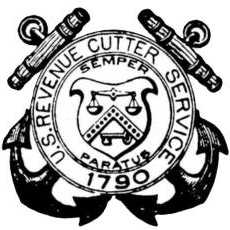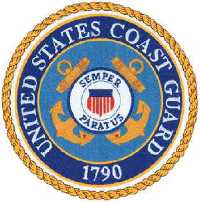 SKC Films Library SKC Films Library |
|
|
| SKC Films Library >> Naval Science >> Services of Navies |
| U.S. Coast Guard: A Timeline 1790 Congress authorized construction of 10 cutters for a Revenue Marine Service. From then until 1798, when the Navy was reorganized, the Revenue Marine served as the nation's only naval force. 1798-1800 The Revenue Marine Service cooperated with the Navy in fighting French privateers. 1808 The Revenue Marine Service was made responsible for enforcing President Thomas Jefferson's embargo closing U.S. ports to European trade. 1819 Congress authorized revenue cutters to protect United States merchant vessels against piracy, and to seize vessels engaged in slave trading. 1831 The Revenue Marine began its first winter cruising to aid seafarers and ships in distress. 1837 Congress authorized the use of public vessels to cruise the coast in rough weather and help navigators in distress. 1861 The cutter Harriet Lane fired the first shot from any vessel in the Civil War.
1863 The Revenue Marine Service was renamed the Revenue Cutter Service. 1871 The Lifesaving Service was established as a branch of the Revenue Cutter Service. 1876 The School of Instruction of the Revenue Cutter Service was established near New Bedford, Massachusetts. (It became the U.S. Coast Guard Academy in 1915.) 1878 The Lifesaving Service became an independent bureau of the Department of the Treasury. 1898 The cutter McCulloch sent the first news of the U.S. victory over the Spanish fleet at Manila Bay.
1915 The Revenue Cutter Service and Lifesaving Service were combined as the United States Coast Guard. World War I 1939 The Lighthouse
Department of the Department of Commerce
was transferred to the Coast Guard. World War II 1941 The Coast Guard Reserve was established. 1942 The Bureau of
Marine Inspection was transferred from the Department of
Commerce to the Coast Guard. 1945 The icebreaker Mackinaw made the first winter trip through the Soo Locks. 1957 The cutters Storis, Bramble, and Spar became the first U.S. ships to complete a trip through the Northwest Passage. Vietnam War 1967 The Coast Guard was transferred from the Treasury Department to the Department of Transportation. 1972 Congress passed the Ports and Waterways Act, directing the Coast Guard to establih and enforce regulations governing the construction of oil tankers and other ships carrying polluting substances in U.S. waters. The act also authorized the Coast Guard to develop vessel traffic control systems to help prevent accidents in crowded harbors and waterways. 1976 The Coast Guard Academy admitted women for the first time. 2003 The Coast Guard was transferred from the Department of Transportation to the Department of Homeland Security. SEE ALSO |
| SKC Films Library >> Naval Science >> Services of Navies This page was last updated on 05/08/2017. |

